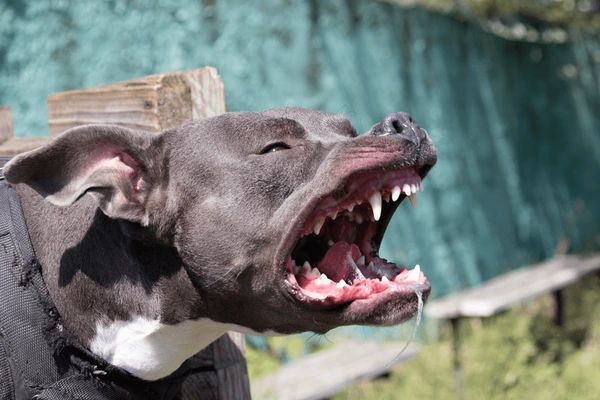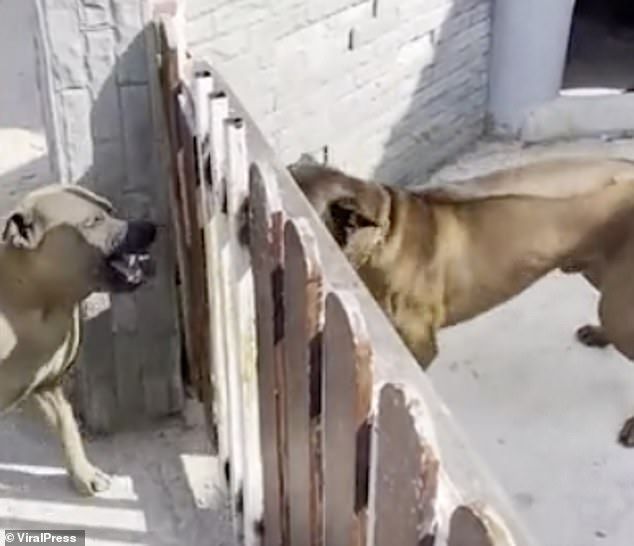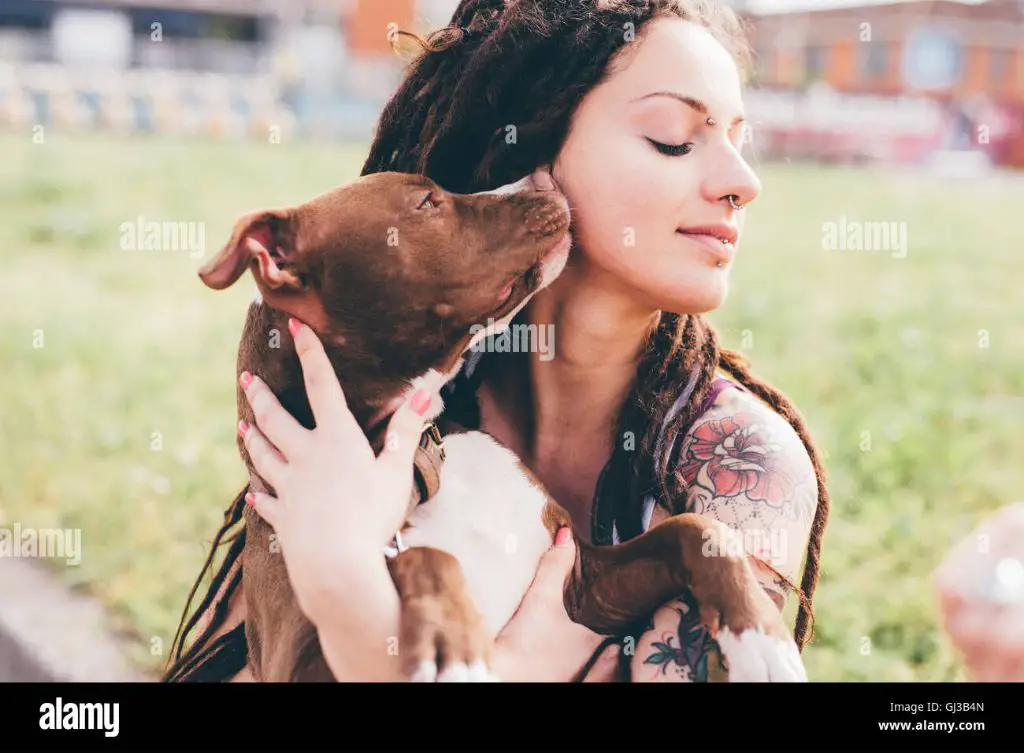History of Dogfighting
Dogfighting has a long and brutal history tracing back to 19th century England. Originally, dogfighting emerged alongside bull-baiting, in which dogs were pitted against bulls and bears for spectators’ entertainment. Bulldogs were the dogs of choice for bull-baiting, valued for their strength and courage to take on much larger animals.
As bull-baiting declined in popularity, dogfighting rose as a replacement bloodsport. The original dogfights of the 1800s involved pitting Bulldogs against each other in small pits or fighting rings, for spectators to gamble on the outcomes. Rules and techniques evolved over time, making dogfighting a codified spectator sport and gambling activity especially popular among England’s working classes.
Pitbull Breed History
The origins of the pitbull breed can be traced back to bull-baiting in England in the 1800s. Bull-baiting was a blood sport where bulls were tied to a post while dogs attacked them. Bulldogs were specifically bred to bait bulls – to bite and hang on to the bull’s nose and face area. Their short, stocky bodies and strong jaws made them ideal for this gruesome task.
When bull-baiting was outlawed in England in 1835, the Bulldogs were then bred with terriers to create smaller, more agile dogs for organized dog fighting contests. These crosses became known as “bull and terriers”, which was eventually shortened to “pit bull terriers” or just “pitbulls”.
So in essence, the pitbull breed was purposely created for violence and aggressiveness through selective breeding. Their ancestry is steeped in blood sports, giving them a genetic predisposition towards combat. This history helps explain why pitbulls came to be the breed of choice for illegal dogfighting rings, who wanted tenacious dogs that would never back down from a fight.
Pitbull Physical Traits
Pitbulls have a number of physical traits that make them well-suited for dogfighting according to those who participate in this illegal bloodsport. They often have broad, muscular chests and shoulders along with strong, powerful jaws that can deliver a devastating bite. Their jaws generate an extremely high bite force, allowing them to inflict significant damage on opponents in the fighting pit. Pitbulls also tend to be very agile and athletic with powerful hind legs that provide explosive acceleration when attacking.
In addition, pitbulls have a reputation for being able to ignore pain and continue fighting even when injured. Their high pain tolerance and extreme tenacity contribute to their appeal for dogfighting. Even when pitted against larger opponents, pitbulls demonstrate a ‘gameness’ or unwillingness to give up during a match that supporters of dogfighting find desirable. While these physical and temperamental attributes make the pitbull breed popular for exploitation in dogfighting, the illegal activity leads to immense animal suffering and should be condemned despite any perceived ‘suitable’ traits.

Training Pitbulls for Dogfighting
Unfortunately, some owners choose to train pitbulls to be highly aggressive for the purposes of profiting from illegal dogfighting. To prepare pitbulls for fights, unethical owners utilize abusive techniques aimed at making the dogs vicious. These training methods are completely inhumane and should be condemned.
A primary method for increasing a pitbull’s aggressiveness and gameness (willingness to keep fighting) is the “cat mill”. The dog is placed in a caged area with a cat and encouraged to attack until the cat is killed. This process is repeated over and over to desensitize the pitbull to the violence. Another technique is to have the pitbull fight against other dogs during training matches where they wear heavy collars or are staked to the ground. Weight pulling exercises are used to increase muscle mass and attack power.
Narcotics, hormones, and steroids may also be administered to escalate aggressiveness. Some trainers may starve dogs or beat them to create a meaner mentality. Methods like electrocution, swimming exercises to the point of exhaustion, and chaining outside in extreme weather conditions are also horrifically used.
Any training approach aimed at enhancing a pitbull’s desire to attack is unethical, inhumane, and illegal. Pitbulls themselves are not inherently aggressive toward other animals or humans. It is only through systematic abuse that they can be manipulated into becoming vicious fighting dogs.
Rules and Structure of Dogfights
Dogfighting is an illegal and inhumane activity in which two dogs are pitted against each other in a ring or pit to fight, often to the death. There are generally agreed upon rules and norms within the underground dogfighting community for how fights are organized and conducted.
Fights typically take place in a square ring or pit that is 14-20 feet on each side. The walls are often about 2-3 feet high to keep the dogs contained. Before the fight begins, the dogs’ weights are matched up as closely as possible to make the fight “fair.” Handlers wash and examine each dog to check for diseases or injuries that could give an advantage.

Dogs are coached by their handlers before fights to increase aggression and gameness (willingness to keep fighting). Common training methods involve using smaller animals as “bait” for the dogs to attack. Dogs have their teeth removed to prevent bad injuries that could end a fight early.
During fights, there is a referee overseeing the rules. Dogs fight until one dog taps out, which usually involves turning its back or laying down submissively. Dogs who refuse to scratch (return to the fight after a break) automatically lose. Fighting continues in rounds with breaks in between until one dog wins.
Betting occurs throughout, with spectators gambling large amounts of money on the outcomes. Injuries and deaths are common, though measures are taken to prolong fights for entertainment and gambling purposes.
Betting and Profit
Dogfighting provides opportunities for gambling and profit through betting on the outcome of fights. Spectators frequently wager large sums on the dogs, escalating the stakes and violence of the events. Some dogfights allow side bets and proposition bets on details like Gameness testing, or which dog the other will start on. The gambling atmosphere resembles that of an underground casino or sports betting operation, with wealthy spectators flashing money and bookies facilitating wagering in backrooms. The appeal of high stakes gambling fuels the popularity and prevalence of dogfighting despite its illegality. Fights can generate thousands of dollars changing hands in a single night. For career dogfighters, breeding and training fighting dogs is motivated by potential profits from winning bets, along with stud fees and puppy sales. The criminal financial gains, tax-free cash, and absence of government oversight incentivize the continued operation of regional dogfighting circuits.
Popularity Despite Illegality
Dogfighting has persisted as an underground activity despite being outlawed in all 50 states and the District of Columbia. While the exact number of people involved is unknown, it’s estimated hundreds of thousands may participate in dogfighting as a spectator sport. The attraction lies in the illegal nature, high stakes gambling, and perceived machismo. For some, the thrill comes from evading law enforcement and engaging in an activity seen as taboo.
Dogfights usually take place in secluded locations like abandoned buildings, backyards, basements, garages, vacant lots, warehouses, barns or fields in rural areas. The events are held in secret, with spectators kept small and making private arrangements to attend. Still, major tournaments may draw dozens or even hundreds of people. While the vast majority are held locally, larger events are arranged regionally or even nationally.

The internet and social media have enabled dogfighters to connect, exchange information, and organize matches. Websites, message boards, email groups and social media make it easier to coordinate logistics and share details only among trusted participants. This facilitates the spread of dogfighting while helping evade authorities. However, increased public awareness and targeted interventions by law enforcement have led to more arrests, rescues and shutdowns of major operations.
Efforts to Stop Dogfighting
Many organizations and individuals are working hard to end the cruelty of dogfighting. Public awareness campaigns help educate people about the violence involved and encourage them to report any suspected dogfighting activities. Tougher laws have also been enacted in many places to crack down on this illegal bloodsport.
One major anti-dogfighting campaign is Dogs Deserve Better, which works to promote adopting pitbulls and other bully breeds as family pets instead of using them for fighting. They rescue fighting dogs and help rehabilitate them to become gentle companions. The ASPCA is another group dedicated to stopping dogfighting through public education, advocacy for stronger laws, and directly assisting law enforcement.
All 50 U.S. states now have felony penalties for dogfighting activities. The federal Animal Fighting Prohibition Enforcement Act also provides additional tools to prosecute dogfighters. Harsher punishments help deter people from entering dogs in fights and make it easier for authorities to shut down illegal operations. Ongoing enforcement of these laws by police and animal control is critical to ending the cruel practice of dogfighting.
While there is still work to be done, the efforts of compassionate citizens have begun transforming public opinion on dogfighting. Continuing to promote awareness and strengthened laws will hopefully lead to the eventual eradication of forcing dogs to viciously fight each other for “entertainment” and profit.
Rehabilitating Fighting Dogs
Many organizations work to rehabilitate and rehome retired fighting dogs. With proper training and socialization, these dogs can go from the fighting pit to family pet. However, it takes time, patience and specialized methods to overcome their conditioning as fighters.
The first step is to evaluate the dog’s temperament and create a customized training plan. Aggressive behaviors need to be minimized through desensitization, confidence building and positive reinforcement. Obedience training helps establish trust and control. Socialization helps the dogs interact properly with people, other animals and new environments.
Since fighting dogs have never lived in homes, they need housetraining and lessons on stairs, windows, doors and more. Crate training provides them with a safe space. Puzzle toys and activities boost mental stimulation. A regular routine lends stability. Medication can help in some cases of severe anxiety or aggression.
Specialized foster programs allow the dogs to gradually get used to family living. The foster family continues the training and socialization. When ready for adoption, these dogs need owners familiar with the breed and rehabilitation methods. Responsible ownership and continued training helps them thrive in their new lives.
Alternatives and Solutions
There are many positive alternatives to using pitbulls for dogfighting. The most important solutions involve promoting pitbull adoptions and humane training methods.

Many animal shelters are filled with pitbulls and pitbull mixes awaiting adoption. Adopting a pitbull provides them with a loving home and prevents them from potentially falling into the hands of dogfighters. There are many misconceptions about pitbulls being inherently dangerous, but research shows with proper socialization and training, pitbulls can be very affectionate family pets. Adopters should use only positive reinforcement training, never punishment.
Humane training uses rewards like treats, praise, and play to reinforce good behaviors. It builds a bond between dog and owner through mutual trust and respect. Techniques like clicker training, scent work, and agility activities also provide pitbulls with mental stimulation. Meanwhile, punishment-based methods involving physical corrections or intimidation tactics should never be used, as they are ineffective and inhumane.
With commitment and patience, former fighting dogs can be rehabilitated through desensitization, counterconditioning, and confidence-building. But ultimately, promoting pitbull adoptions and humane training on a wider scale is key to reducing the supply of dogs available for fighting purposes. Education and advocacy can help dispel myths around pitbull temperament and highlight their potential as wonderful companions when raised humanely.